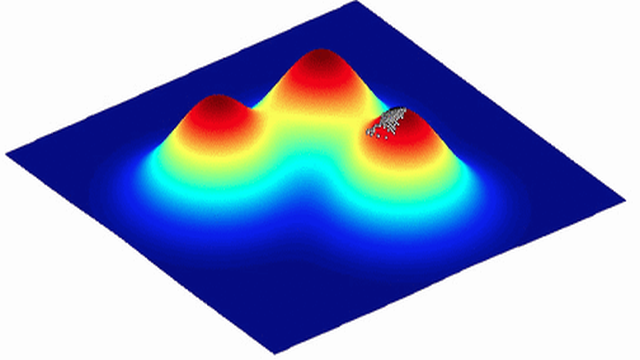
Evolution and the organisation [RealKM Connect introductory series]
This is part 7 of a series of articles presenting key points from Stephen Bounds’ presentation1 to a RealKM Connect introductory seminar in November 20162.
Evolutionary biology developed the idea of fitness landscapes, in which a group of people or organisations over time will tend towards behaving in the same way to maximise their utility and evolve towards certain characteristics. However, organisations don’t exist unless someone creates them. If you don’t pay people, the organisation will disappear quickly, unlike a population of rabbits which exists because the rabbits exist. Even in volunteer organisations there still needs to be people with the passion to set up the structure and make it happen.
In an organisation we can talk about fitness, which is what matters from an external perspective, whether you are succeeding as an organisation. There are also incentives, the internal selection pressure, which dictate how people within the organisation behave. Depending on the mix of organisational fitness that’s relevant to the external environment and the incentives which are present in the internal environment, a stable organisation may not be an efficient or effective organisation from the perspective of those who use the organisation’s services.
Small businesses tend to be far more exposed to external pressures because of what they need to do to make the business viable. A monopoly like the public service doesn’t face the same level of eternal pressure. In a public service environment the things that tend to affect behaviours are the internal pressures, the things that people who work within that organisation care about, be that prestige, money, or altruistic factors.
A major corporation is exposed to both situations. In a competitive environment, the size builds enough capacity to have the internal factors work as an important factor as well.
In an article published in Organization Science in 1992, before knowledge management as a term was actively promoted, the authors state that3:
…a firm’s functional knowledge is nested within a higher-order set of recipes that act as organising principles. Complex organisations exist as communities within which varieties of functional expertise can be communicated and combined by a common language and organising principles.
There are ways to encourage organisations to change, understanding that they will tend towards stability. One is the immediacy of the burning platform, ‘We have to fix the platform or we all have to have to jump off.’ The organisation can also change what it does, by starting or stopping a process it forces the organisation to adapt to a new way of doing things, and that will change the organisation.
The next edition will examine the role of technology as a change agent and disruptor in an organisation.
Header image source: Modified from Adaptive landscape by Rhiever&action which is licenced by CC BY 3.0.
References and notes:
- Stephen Bounds is the Director and Principal Consultant at KnowQuestion, publisher of RealKM Magazine. ↩
- For a copy of the transcript please contact Amanda Surrey. ↩
- Kogut, B. and Zander, U. (1992). Knowledge of the Firm, Combinative Capabilities, and the Replication of Technology. Organization Science 3(3), p. 390. doi:10.1287/orsc.3.3.383 ↩






